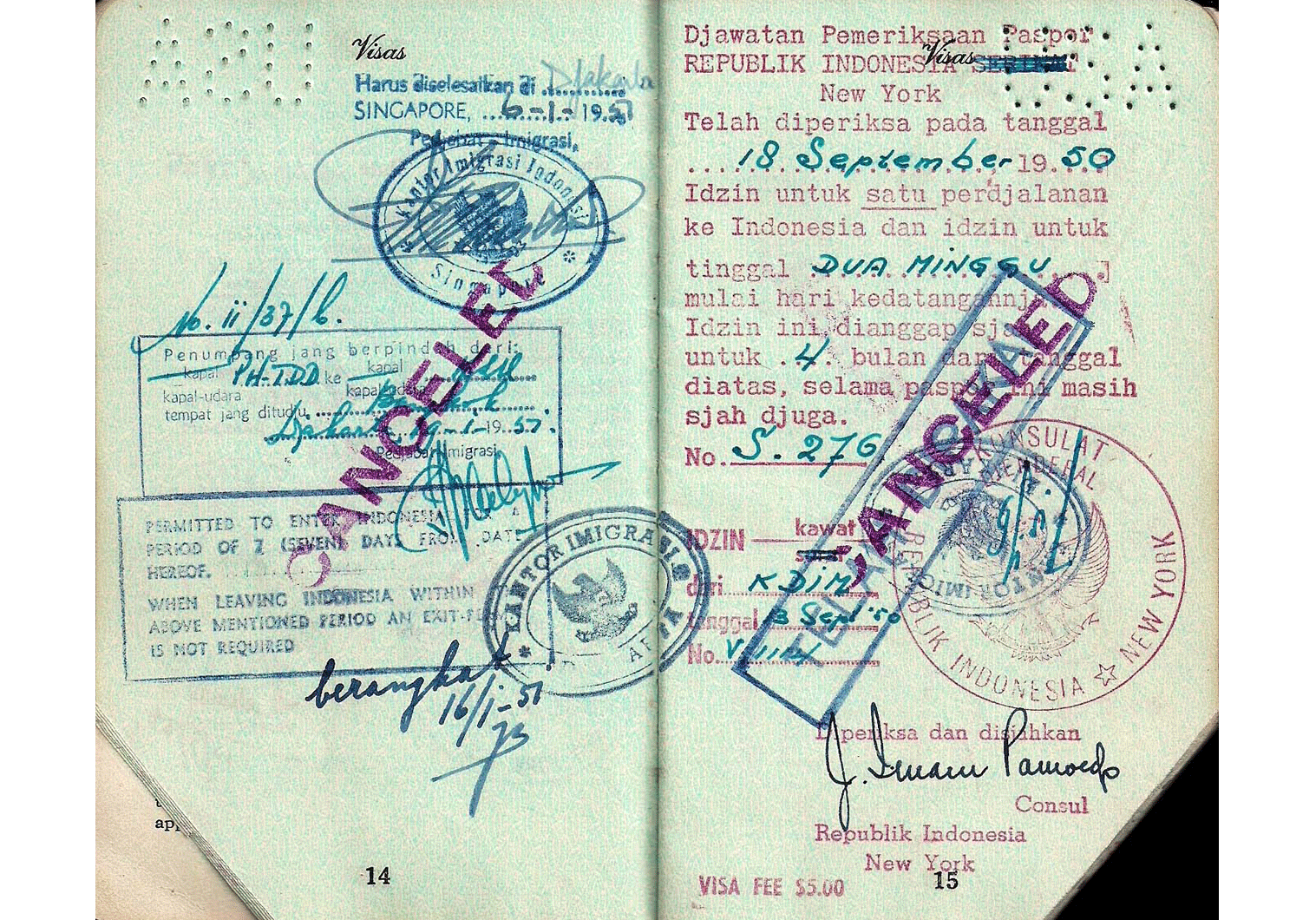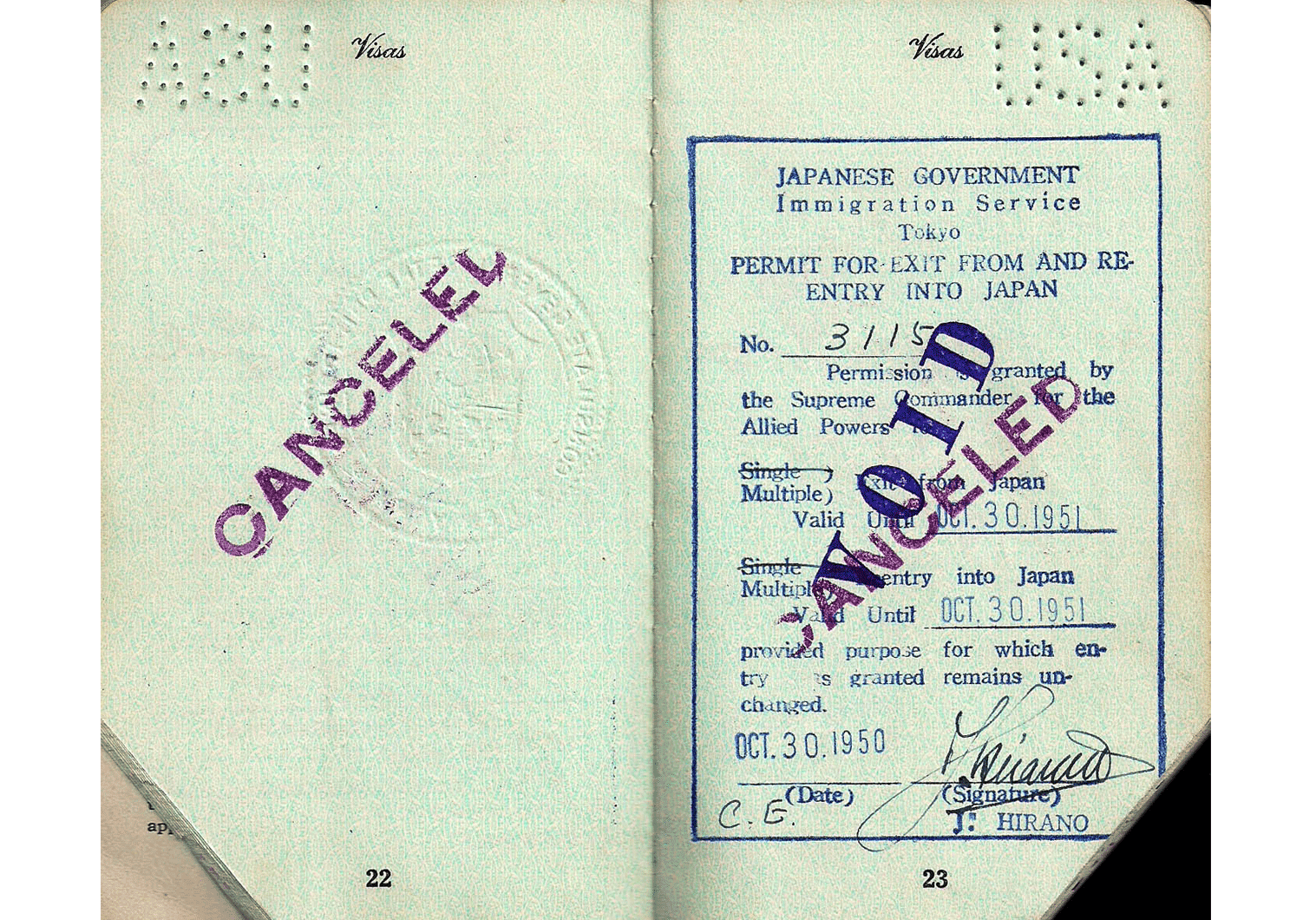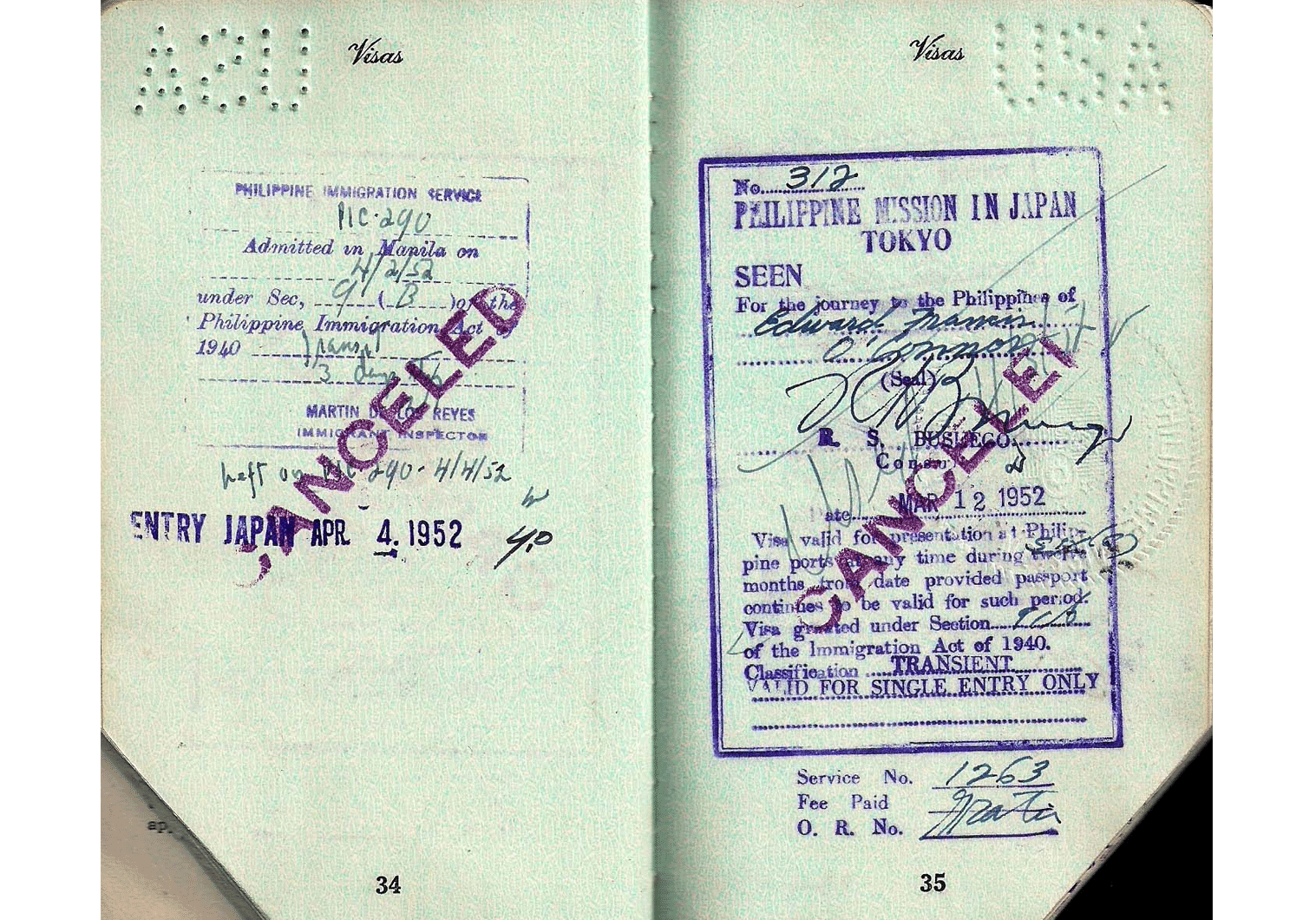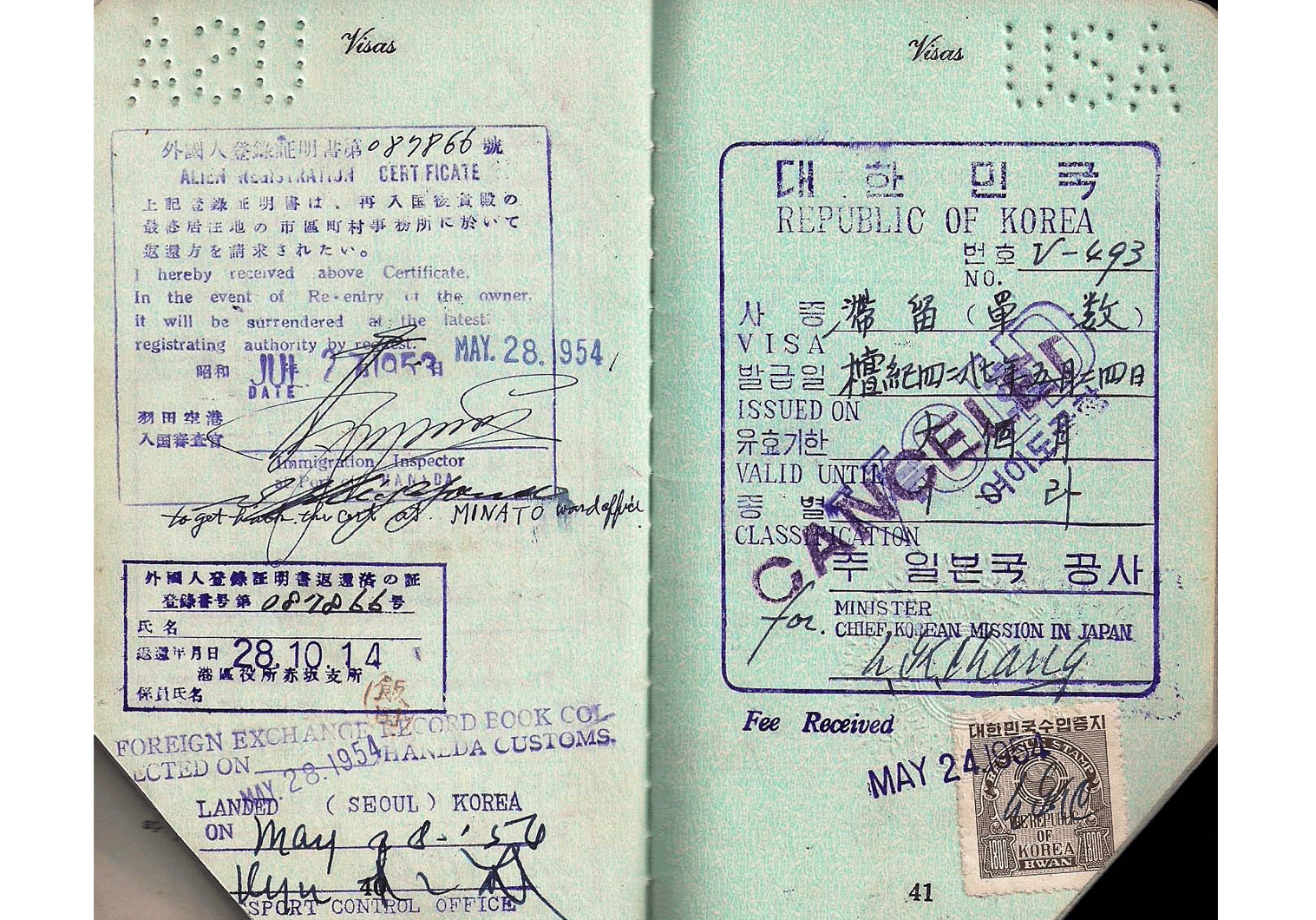United Nations Command
Korean War issued special visa.
One of the aftermaths of the Second World War was the Korean War that broke out on the Korean peninsula in 1950 and lasted until 1953, with the division of forces and population behind the 38th parallel; a division that exists still today and separates a nation.
The fighting was between North Korean, together with Chinese forces, and the United Nations forces that consisted of many countries, for example the US, British, French, Belgium, Danish, Indian, Philippines, Colombian, Italian, Australian and more.
The fighting erupted following the entry of North Korean troops into what is today South Korea on June 25th 1950, and lasted until cessation of hostilities, from both sides, on July 27th 1953, with the signing of the Korean Armistice Agreement.
During the war, the UN established the UNC, which was the United Nations Command, the body that took command of the multinational armed forces that supported South Korea. This organization, or structure, was active during and after the Korean War ended.
The passport in this article was issued to United States movie director who was sent to the Far East, named Edward Francis O’Connor (the passport indicates that he worked for Metro Goldwyn Meyer). It was issued on August 24th 1950 and his first stop, and apparently his home for the coming months, was occupied Japan: inside we can find amazing allied issued entry permits to the islands, dating from October 30th. What is interesting about these visas, is that they are NOT the regular allied forces issued visas (from 1945 to around 1949) but the interim temporary issued visas, by the new independent Government of Japan (full control of the government was restored in 1951). So these are rather rare short-lived visas (images on pages 23 & 31), similar to those allied visas issued for West Germany around 1950-1951.
His passport also shows us that he traveled to South Korea, but this was after the end of the fighting, 1954, still, we can find inside the rare “Headquarters United Nations Command APO 500” entry permission:
” THE BEARER HAS PERMISSION TO ENTER KOREA BY AGREEMENT BETWEEN THE REPUBLIC OF KOREA AND THE COMMANDER-IN-CHIEF UNITED NATIONS COMMAND, PROVIDED PASSPORT HAS APPROPRIATE VISA FROM THE KOREAN GOVERNMENT“.
The South Korean early entry visa, together with the Far East Command permission for travelling to the Island of Okinawa as well, is a good find inside this unique Korean War related passport.
Although 60 years have already passed, we can still feel today the ramifications of those events.
I have added images of other visas inside this document, which add to its rarity.
Smaller image source: Britannica.
Thank you for reading “Our Passports”.

















